
Starship Troopers is a military science fiction novel by American writer Robert A. Heinlein. Written in a few weeks in reaction to the US suspending nuclear tests, the story was first published as a two-part serial in The Magazine of Fantasy & Science Fiction as Starship Soldier, and published as a book by G. P. Putnam's Sons on November 5, 1959.

Military science fiction is a subgenre of science fiction and military fiction that depicts the use of science fiction technology, including spaceships and weapons, for military purposes and usually principal characters who are members of a military organization, usually during a war; occurring sometimes in outer space or on a different planet or planets. It exists in a range of media, including literature, comics, film, television and video games.

Mary Beatrice Midgley was a British philosopher. A senior lecturer in philosophy at Newcastle University, she was known for her work on science, ethics and animal rights. She wrote her first book, Beast and Man (1978), when she was in her late fifties, and went on to write over 15 more, including Animals and Why They Matter (1983), Wickedness (1984), The Ethical Primate (1994), Evolution as a Religion (1985), and Science as Salvation (1992). She was awarded honorary doctorates by Durham and Newcastle universities. Her autobiography, The Owl of Minerva, was published in 2005.
Roleplay simulation is an experiential learning method in which either amateur or professional roleplayers improvise with learners as part of a simulated scenario. Roleplay is designed primarily to build first-person experience in a safe and supportive environment. Roleplay is widely acknowledged as a powerful technique across multiple avenues of training and education.

Stiff: The Curious Lives of Human Cadavers is a 2003 nonfiction book by Mary Roach. Published by W. W. Norton & Company, it details the unique scientific contributions of the deceased.

Mary Roach is an American author specializing in popular science and humor. She has published seven New York Times bestsellers: Stiff: The Curious Lives of Human Cadavers (2003), Spook: Science Tackles the Afterlife (2005), Bonk: The Curious Coupling of Science and Sex (2008), Packing for Mars: The Curious Science of Life in the Void (2010), Gulp: Adventures on the Alimentary Canal (2013), Grunt: The Curious Science of Humans at War (2016), and Fuzz: When Nature Breaks the Law (2021).

Cynthia Holden Enloe is an American political theorist, feminist writer, and professor. She is best known for her work on gender and militarism and for her contributions to the field of feminist international relations. She has also influenced the field of feminist political geography, with feminist geopolitics in particular.
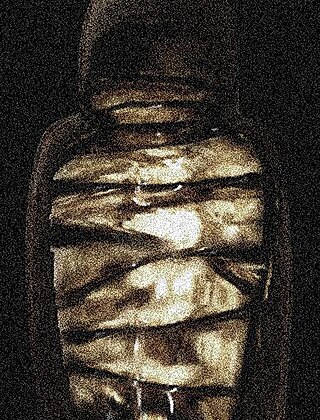
A mellified man, also known as a human mummy confection, was a legendary medicinal substance created by steeping a human cadaver in honey. The concoction is detailed in Chinese medical sources, including the Bencao Gangmu of the 16th century. Relying on a second-hand account, the text reports a story that some elderly men in Arabia, nearing the end of their lives, would submit themselves to a process of mummification in honey to create a healing confection.
Gloria Emerson was an American author, journalist and New York Times war correspondent. Emerson received the 1978 National Book Award in Contemporary Thought for Winners and Losers, her book about the Vietnam War. She wrote four books, in addition to articles for Esquire, Harper's, Vogue, Playboy, Saturday Review and Rolling Stone.

Daniel J. Siegel is a clinical professor of psychiatry at the UCLA School of Medicine and executive director of the Mindsight Institute.
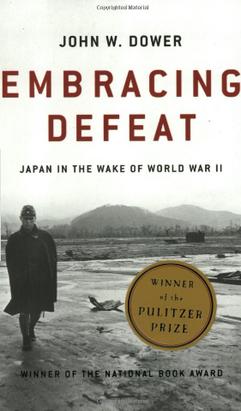
Embracing Defeat: Japan in the Wake of World War II is a history book written by John W. Dower and published by W. W. Norton & Company in 1999. The book covers the difficult social, economic, cultural and political situation of Japan in the aftermath of World War II and the nation's occupation by the Allies between August 1945 and April 1952, delving into topics such as the administration of Douglas MacArthur, the Tokyo war crimes trials, Hirohito's controversial Humanity Declaration and the drafting of the new Constitution of Japan.
Jennet Conant is an American non-fiction author and journalist. She has written five books about World War II, three of which have appeared on the New York Times Best Seller list: Tuxedo Park: A Wall Street Tycoon and the Secret Palace of Science that Changed the Course of WWII, 109 East Palace: Robert Oppenheimer and the Secret City of Los Alamos, The Irregulars: Roald Dahl and the British Spy Ring in Wartime Washington, and A Covert Affair: Julia Child and Paul Child in the OSS.

Bonk: The Curious Coupling of Science and Sex is a 2008 book by American popular science writer Mary Roach. It follows the winding history of science and its exploration of human sexuality, going back as far as Aristotle and finally ending with recent discoveries about the origination and anatomy of the female orgasm. Throughout, Mary Roach provides a humorous and often very personal view—both as a participant and observer—of humans, scientists, animals, and sex machines. Of the book's numerous accounts, Roach discusses artificial insemination of sows in Denmark, the history of sex machines, and provides commentary on Alfred Kinsey's notorious attic sex experiments. Her footnotes provide additional humor: as in a sentence that includes several DSM diagnoses listed as acronyms, she adds, "And from HAFD ". In the book, Roach describes a session in which she and Ed, her husband, volunteer to have sex while being recorded by a groundbreaking 4D ultrasound, in the interests of science. A doctor looks on during the experiment, making suggestions, and finally telling Ed that he "may ejaculate now".
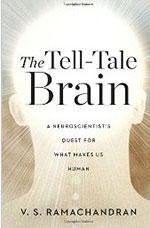
The Tell-Tale Brain: A Neuroscientist's Quest for What Makes Us Human is a 2010 nonfiction book by V. S. Ramachandran that explores the uniqueness of human nature from a neurological viewpoint.

Packing for Mars: The Curious Science of Life in the Void is a nonfiction work by science author Mary Roach.

Sam Kean is an American writer. He has written for The New York Times Magazine, Mental Floss, Slate, Psychology Today, and The New Scientist. He has also published six books which discuss scientific discoveries in a narrative style. His books received positive reviews in The Wall Street JournalLibrary Journal, and The New York Times. He was born in Sioux Falls, South Dakota, and lives in Washington, D.C.

Thirteen Soldiers: A Personal History of Americans at War is a 2014 book by United States Senator John McCain and his frequent collaborator and former staff member Mark Salter. Published by Simon & Schuster, it contains a chapter representing one person's story from each of America's thirteen major wars.
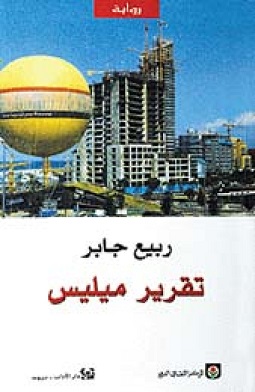
The Mehlis Report is a book by Lebanese author Rabee Jaber. Published in 2005 in Arabic by Jaber, it tells the story of an architect, Saman Yarid, who is waiting for the United Nations' Mehlis Report to be released in late 2005. The Mehlis Report takes the reader on a journey through Lebanese history regarding the lead up to the release of German prosecutor Detlev Mehlis’ report to the United Nations on October 21, 2005 regarding the February 14, 2005, car bombing assassination of Lebanon’s former Prime Minister Rafik Hariri.
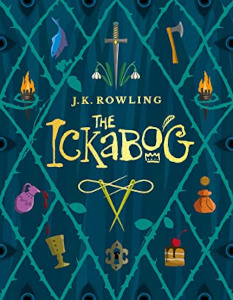
The Ickabog is a fairy tale by J. K. Rowling. The story was published in installments by Rowling online, before its official publication in November 2020. The Ickabog is Rowling's first children's book since Harry Potter and the Deathly Hallows was published in 2007. Upon release the book received generally positive critical reviews and emerged a bestseller.
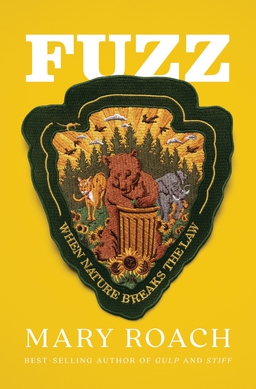
Fuzz: When Nature Breaks the Law is a 2021 nonfiction book by Mary Roach. Published by W. W. Norton & Company, it details the "curious science of human-wildlife conflict."

















